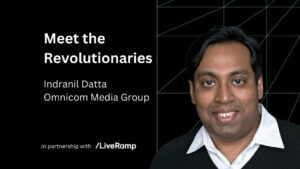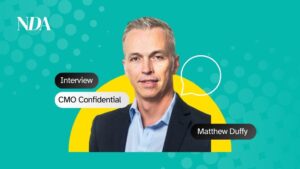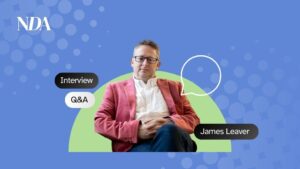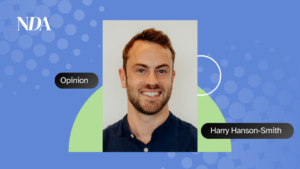Consumer behaviours have changed since the pandemic, with many more people choosing to shop online and continuing to do so today.
New Look, which operates over 300 high-street retail stores across the UK & Ireland, was quick to respond to this shift. It turned to Microsoft Advertising to help execute its performance marketing campaigns, using the Microsoft Audience Network to place its campaigns in front of new audiences, in new ways, using new channels.
NDA spoke to Thomas Charlwood, Paid Search Manager at New Look, to find out more…
What were the main objectives of your recent collaboration with Microsoft Advertising?
Before our collaboration with Microsoft Advertising, we were only doing search and shopping. Alongside an expansion on the Google side, where we’ve launched Discovery and YouTube ads, we’ve also been working with Microsoft Advertising to expand our upper funnel coverage.
When people think of traditional display ads, they sometimes have a reputation for being a bit spammy, overwhelming, low-quality and sometimes could appear on any type of content there is on the internet. I’ve definitely seen instances in the past where someone would say – “What is this ad doing here? Why does it look like this? Who signed this off?” – all those kinds of questions.
But actually, Microsoft Advertising put forward the proposition of using the Microsoft Audience Network to complement our existing activity across search and shopping. We were interested as it gave us a brand-new way to communicate our core brand messages. Key propositions like value and sustainability can be hard to weave in as a pure performance marketing channel, so this seemed like a nice avenue to introduce those things.
The strength of the Microsoft Advertising’s Audience Network we found was that the platform gave clear previews of the placements of the ads. We had full control over what was served where. There was reassurance as well that they only appeared on proprietary Microsoft sites alongside high-value editorial content. This gave us a feeling of brand consistency and safety from that side, which is really important.
And then we overlaid that with audiences. From similar and in-market audiences to prospective people who might not be familiar with the New Look’s brand or might not have shopped with us for a while, this approach gave us a powerful way to speak to them.
Having seen the success with the format, we’re looking to continue expanding our offering with Microsoft, with video advertising, which to us represents a further opportunity to engage with audiences in a dynamic and visually appealing way.
What were the key results of the campaign/project?
We are obviously using a performance-led approach, but there’s also other things we are starting to take into account as well – like new customer acquisition and customer lifetime value.
Comparing 2022 with 2021, the number of impressions driven by the brand’s feed-based ads on the Microsoft Audience Network is up 200% year-over-year (YoY), while clicks are up 130%, driving a powerful return on advertising spend (ROAS) of 740%. The impact of the Microsoft Audience Network in combination with strong shopping campaigns has meant the overall New Look account has increased its efficiency, driving more clicks at lower cost. This has seen overall ROAS for the year go from 730% in 2021 to 1170% in 2022.
But now, in addition to ROAS and trafficking, we are looking to understand the full customer journey a bit more completely as well.
What trends in consumer behaviour are most important to New Look’s paid search strategy right now?
The thing that we are seeing right now – there obviously is the cost-of-living crisis and we are also seeing how we directly respond to that as a business while also being able to process the impacts that’s having on our business as well.
I’m sure all businesses are feeling exactly the same. There’s a joint impact – there’s the impact on the business itself, how the supply chain, how the price of materials and fuel, etc. are all impacting our operating costs internally; but then there’s also the impact on the consumer, what they’re able to spend, and how we best directly communicate that.
I think, at the moment, a lot of our activity and actions are really focused on being able to communicate our value proposition, understand where we sit in the market and place ourselves within that.
The fact that there’s a huge amount of competition in the digital space now – it’s only grown and grown and grown, so it might not be that we’re always going to be the lowest price, for example, but actually, how can we speak to the customer and communicate our USPs and our value proposition as well to most accurately cut through and make the case for the business and turn people into purchasers.

How do you think Search-based marketing evolve might over the next few years?
Search based marketing is a constantly evolving, changing, growing field. It’s very fluid.
I’ve been working in PPC for just over five years now. In that time, I’ve obviously seen a monumental change to the way we do things. I think that in the next five years, that’s only going to continue to change and it’s going to be unrecognisable from where we are now.
It feels like we’re at a crossroad at the moment, particularly I guess I’d be remiss not to talk about AI. We’re seeing really fast and immediate developments in AI. Obviously, it’s something that’s been brewing for a long time. It’s not new, but it’s making headline news and it’s really cutting through to people in a way that it hasn’t before.
Having worked in PPC for a few years, we are definitely well-versed in embracing AI and adapting to change in that way. It has been bedded into the way that we operate for years now, with smart bidding, for example, intelligent targeting all these kinds of things are intrinsic to us. But there are going to be new ways that we can utilise this and play with this.
It’s going to continue to change and evolve, and I do believe that it is only going to be as strong as the guidance behind it. It’s really important that we, as paid search practitioners, give it clear direction, measured human input, and make sure that we are guiding it to success. And I think as a business as well, this seems to be really cutting through now. So, it’s definitely a part of our strategy that we lean into the opportunities and embrace the opportunities that AI presents for us and factor this into all our discussions and strategic planning as well for the years ahead. There is just going to massively change the way that we work and explode our efficiency in that regard.
What tips can you offer others looking to find new customers/audiences by leveraging Paid Search?
For any business looking to utilise performance marketing to its fullest, obviously the place to start from is being able to set clear goals and measurable KPIs and expand your activity based on that. While long term profit is obviously important and I really do understand that as a performance marketer, it’s not something that every activity should be measured on. That’s not the barometer we should use for everything. It’s really important to consider logically what your goals are and where your activity aligns to it and measure around that.
As I said, for upper funnel performance marketing for example, it might not be that you’re always going to be looking at the profit, because that might be the action you are trying to drive. You might be wanting to look at engagement and reach, for example, new customers, new eyeballs. These are all definitely things you should consider. So, it’s about choosing the right measurement for the purpose.
The next one I guess is being able to test, iterate and learn from the results. Trying new things is definitely a big belief of mine that there are opportunities almost everywhere. Whether that’s new channels, new approaches or new tools, PPC is not a static industry, and that means being open-minded to testing, setting a clear hypothesis and using the data to guide our decision-making as well.
In combination with that, there’s also a certain level of intuition. The data tells us part of a story, and that’s really what we should use as our guide. But then we also need to be able to contextualise that within the wider customer experience and our business objectives as well. If it’s something that doesn’t work, see if there’s something you can change or improve and test it. Again, as I said, it’s not static. Keep trying and improving things and it’ll give you the best results.
Following on from that, it’s having a strong foundation in data analytics and reporting – also something I’m very passionate about and we’re a really big believer in this one. Particularly as I deal with multiple large and complex accounts, having clear and easily accessible data is imperative for understanding our accounts, which we can then slice in any number of ways to drill down into performance. From that we can use our data and insights to take informed action.
Next, as I touched on before, is leveraging the tools of an AI-driven world. There’s really a wealth of opportunities for us to do things better, quicker and more efficiently. But saying that, it’s also important to stay on top of the fundamentals. There’s still a lot of opportunities, in my opinion, for traditional optimisations. We should be routinely going into the granular details of that account – thinking about what structure looks like and how that sits alongside AI as well. This is something that comes with time and experience. I think it’s easy to lose sight of it. But I really think that attention to detail is one of the most important qualities for a strong paid search practitioner.
Lastly, also nicely summarises the above, PPC is a really fast-paced and fluid industry. It’s important to stay up to date on the industry and other people’s experiences as well. It’s vital that we stay informed and plan for any upcoming changes and we also work with our partners to maximise any opportunities that this may present.
I think with implementing the above practises and taking those into account, you can maximise your exposure and drive measurable results through performance marketing.












